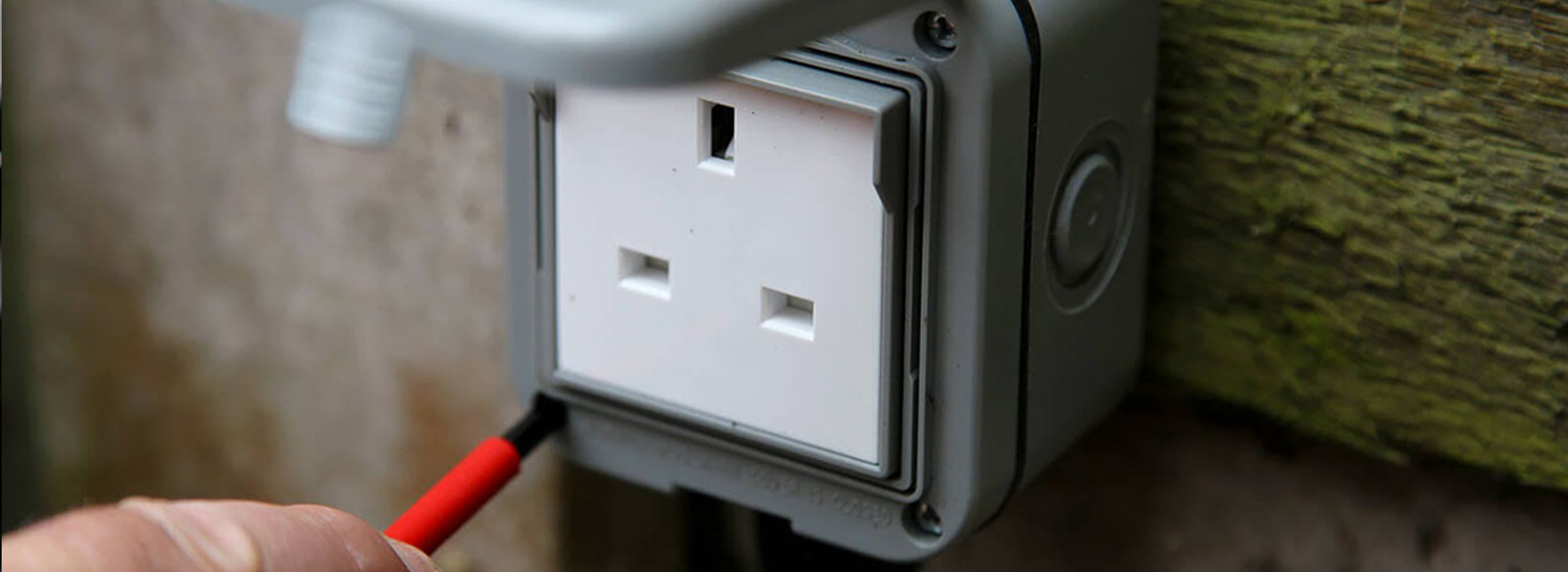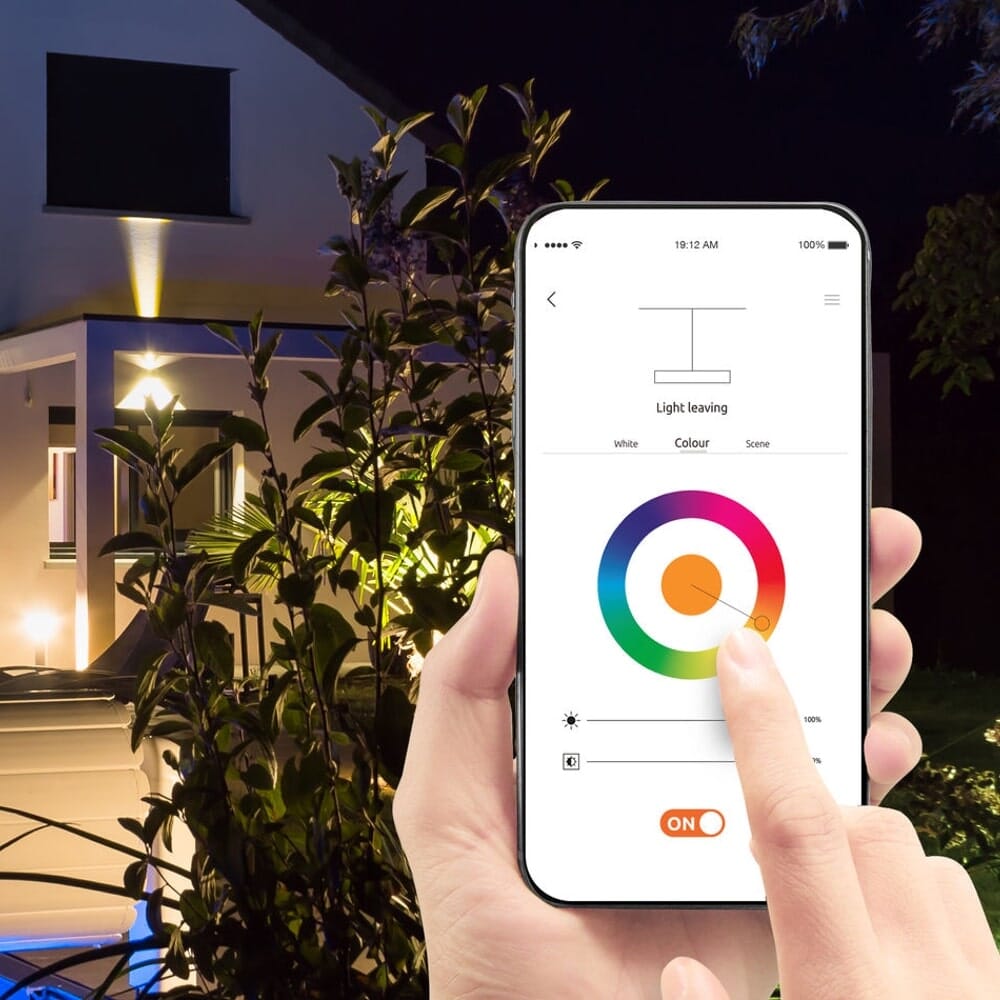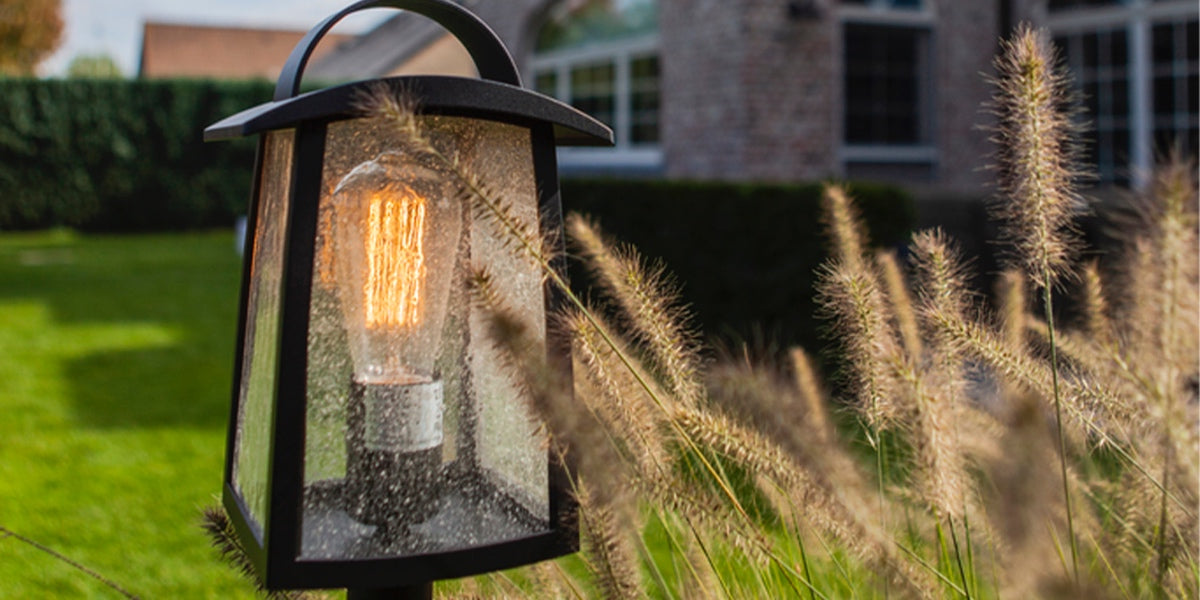Designing your outdoor lighting is the fun part, choosing the style of lights to best suit your home & garden.
Once you've got "the look" your next step is to consider how you'll be switching them on and off.
This guide will give you an overview of the best and most commons methods of switching your garden lighting on and off.
COMMON METHODS

INTERNAL LIGHT SWITCH
Commonly garden lights can be wired back to an internal light switch, just like any other in your home.
This would normally be located by the front or back door and can either turn on some or all of your garden lights at once depending on how it's been wired.
This is a good standard way of doing it, however it does involve getting cabling from each lighting circuit back into your house and to a light switch position so it's not always ideal for retrofit jobs where you don't want to chase walls and redecorate.
It's also not ideal if you want to have 3 or 4 separate outdoor lighting circuits as that means more "wall clutter" with multiple switches.
EXTERNAL LIGHT SWITCH
You can also fit an appropriately rated outdoor light switch locally to the area where the lights are.
This isn't the most common way of switching your lights as it means you have to go outside to turn them on/off.
It may suit some situations such as pergolas, outdoor seating areas etc.
The downside is having multiple switches around your garden that you need to turn on/off physically at each location.
REMOTE CONTROL LIGHT SWITCH
There are two ways to achieve this, one of them is to replace an existing indoor light switch with a remote control version.
Using a handheld or key fob remote you can then turn that light switch(es) on or off without touching the wall switch.
It's easy to fit provided you already have an existing light switch and provides some wireless control, but you're still limited by wireless range and you do need that light switch in the first place.
The second method is using a remote control outdoor garden light switch box which you wire all your lights into and using the wireless remote control you can control each circuit individually without needing any wiring into your home.
It's a great solution but is limited by the fact you can only control from the handheld remote, so don't lose the remote!

WIRELESS LIGHT SWITCH + RECEIVER
Now we're getting into smarter and easier ways to control your outdoor lights!
A wireless switch kit is made up of a completely wireless light switch and a wired in receiver.
You'll connect the mains powered receiver to your garden lighting circuit which can be in a waterproof external box, in a garage etc.
The wireless switch can then be placed anywhere you like in your home, back door, front door, garage etc.
Then you can easily turn your lights on and off from a wall light position with no cabling between the switch and the lights.
Perfect for retrofit jobs and also for saving cabling, avoiding decorating etc.
Wireless switch kits can reduce installation costs drastically.
You can also get additional benefits such as using two wireless switches with one receiver so you can have a light switch by the back door as well as another switch in the garden room controlling the same lights.
Some of our wireless switch kits also have smart features such as Amazon Alexa control so you can also turn your lights on and off with your voice.

SMART LIGHT SWITCH
A smart light switch gives you many "smart" features including;
- Control from your smartphone
- Automatic daily timers
- Scenes - group multiple lights together to create the perfect scene
- Voice Control - Use Alexa / Google Home
You can easily see the benefits here, your garden lights will turn on and sunset and automatically turn off at your desired time each day.
If you're going to spend time and money on garden lighting then you'll want to maximise the time that your lights are on.
The timers will also continue even if you are not home which is a great security measure as it keeps your home looking active which will deter most would be burglars.
Your downside here is that your smart light switch will need to be installed indoors and hard wired back to the lighting circuits. You'll also need a neutral and a 47mm deep back box.
Perfect for new installations / refurbs but a bit harder to retrofit into existing projects.

SMART SOCKETS / PLUGS / RELAYS
Expanding on smart light switches comes smart sockets, plugs & relays.
You can easily install or replace an existing outdoor socket for a smart outdoor socket which gives you all of the features and benefits of a smart light switch.
Ideal for festoon lights, patio heaters etc.
Utilising an outdoor smart relay is another option, installed at the light fitting end you'll get all the same features and benefits as above again however you'll have no physical light switch so everything would be from the app or voice control.

SMART LIGHT FITTINGS
Next up is smart outdoor lights.
These are 230v mains powered lights that you install without wiring any switch wires.
The lights themselves then connect directly to your network and can be controlled from the app.
Once again you get all the benefits of smart outdoor lighting with no wiring required. You don't get a physical wall switch but with automatic daily timers and voice control you might not ever need one...

PIR MOTION SENSORS
An old time favourite, PIR sensors!
You move and the lights come on.
There is still a big need for this with security lighting as you want the light to come on if movement is detected at any time of the night.
We'd suggest keeping PIR sensors for functional and security lighting rather than for the ambient & decorative lighting.
So if you're fitting a security light then consider a security light with PIR motion sensor.
CONCLUSION
As you can see there are quite a few ways you can switch your lights on and off!
We believe the best way is the smart way.
You're spending good money on decent lights to improve the image of your home so maximise that by ensuring they are turned on and off daily automatically without you needing to remember.
With smart lighting you can also combine different types together. All of the smart series range on our website can work from the same app!
So you can have a smart outdoor socket controlling a patio heater and some festoon lights, alongside smart outdoor light fittings and a smart light switch controlling the front of house lights all from one app.
We also feel that the wireless light switch options are a real game changer and problem solver for adding a standard looking light switch inside your home.
Hopefully you now have a better idea of how to plan your garden light switching, if you need any help our team are on hand to offer advice by email, live chat or telephone.





